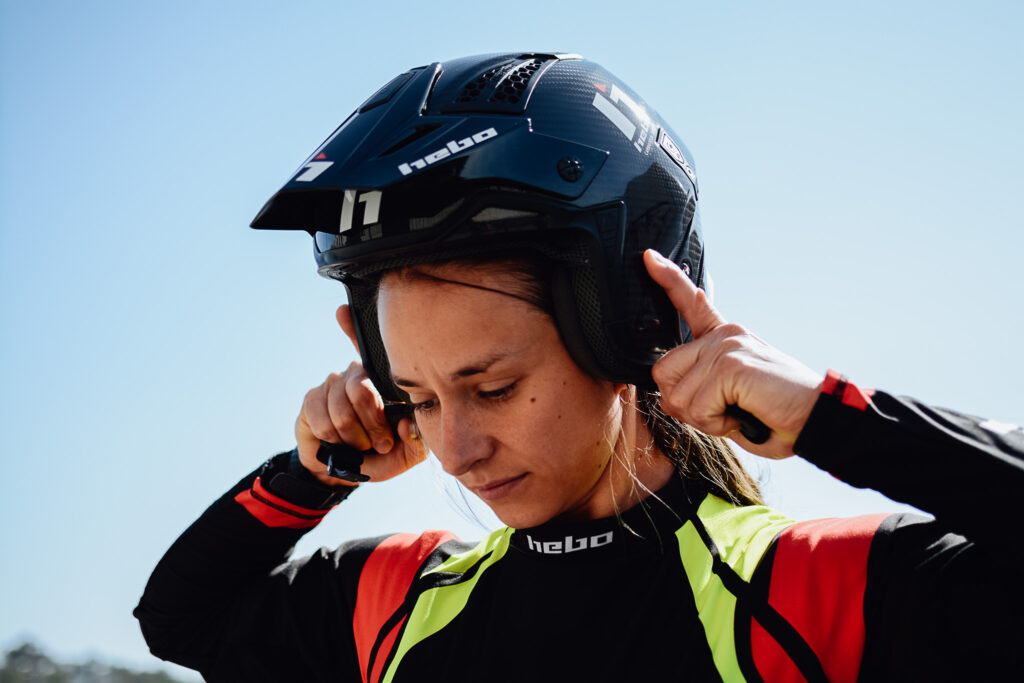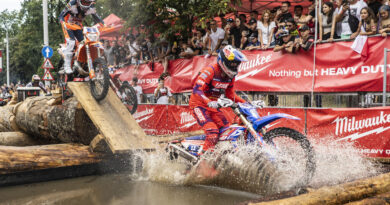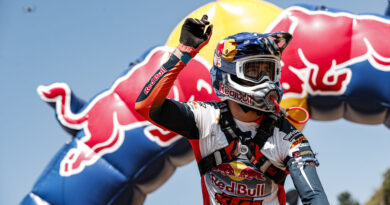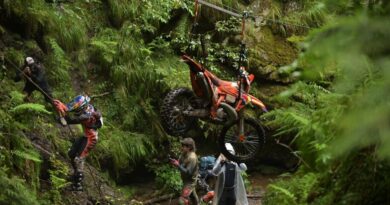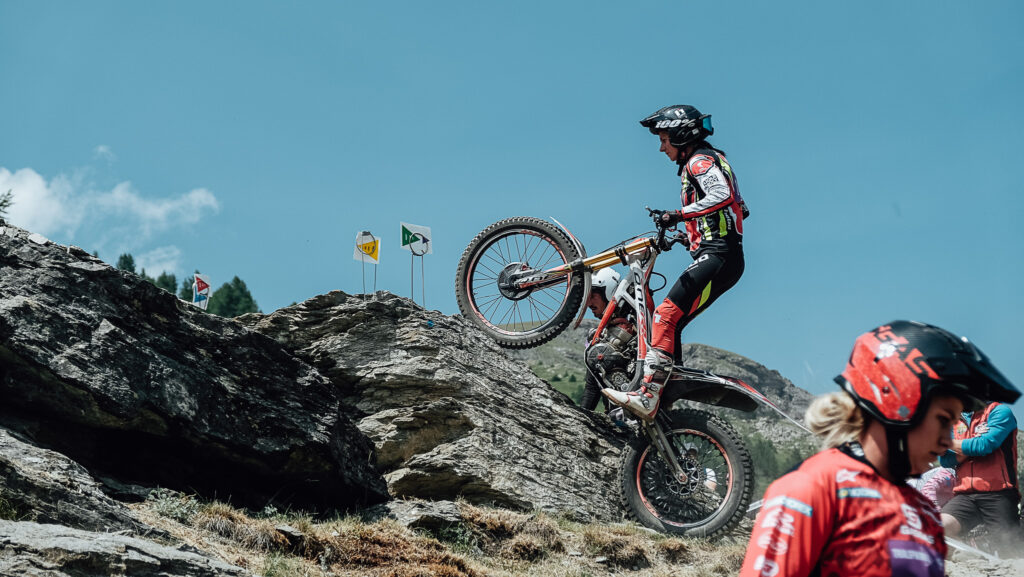
Trial Rider Keity Meier, who has competed in the World Championships, on trial: “It is the foundation of all motorsports!”
In case anyone didn’t know, trial riding has been around for over a hundred years, with the first competitions in riverbeds in Scotland. Estonia’s top trials rider, Keity Meier, talked to MotoSpirit Media about the charm of this sport.
Trial is a motorsport in which riders attempt to navigate technically challenging courses filled with various obstacles, such as rocks, roots, and steep climbs, without putting their feet on the ground. The sport’s history dates back to the early 20th century.
“Over a hundred years ago, guys were just riding around in riverbeds with scooters and berets on their heads because trial bikes as we know them didn’t exist yet, and the competition lasted six days! The mileage ranged from 80 to 150 kilometers, which is quite a lot for a trial competition! But as the years went by, the bikes became more specialized – one direction led to trials, and another led to the development of enduro,” explained trials master Keity Meier. This also marked the beginning of the Six Days Enduro.
According to Meier, a trial bike is like the skeleton of a motorcycle without a seat. An adult’s 125 cc bike usually weighs under 70 kilograms. “There’s a lot of movement on this bike. I see it as a dance – you move up and down, forward and backward, and you need a lot of space for this, so all unnecessary parts are removed from the bike. The only plastic parts are the fenders and the air filter box,” the athlete tried to explain.
Most trial bikes have five gears. Keity uses the first three on the course and the last two for transitions. In the World Championships, Keity had to quickly move from one section to another, sometimes covering considerable distances. In the World Championships, a section might be as long as nine kilometers, while in Estonia, a section might be 1.7 kilometers long, to be completed in 90 seconds.
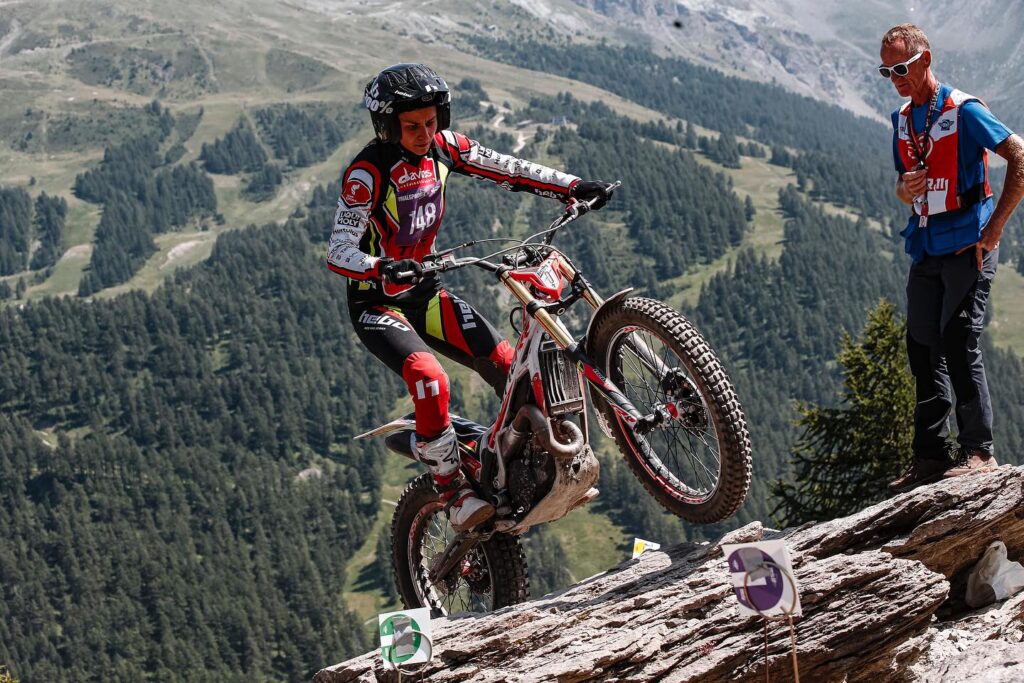
In a section, a trial rider’s skill is evaluated. Each class has its own designated route marked by gates of specific colors. For instance, at Keity’s level, she had to pass through all the red gates. The predetermined route must not be changed, but a well-done route can have different lines according to the rider’s skills and creativity. Obstacles can be approached from any suitable angle but within the limits of one’s class.
Penalty points are given on the course. Five penalty points mean failure: falling where the handlebars touch the ground; feet on one side of the bike or behind the rear axle; crossing one’s path and then turning back; passing through a wrong gate; breaking the tape; rolling back with feet on the ground – the main point is those feet must be on the footpegs or not touching the ground. Each foot touch counts as one penalty point. In reality, the scoring system in trials is quite specific, and those interested can learn more independently, as explaining it all here would be too lengthy. Going over time also fails.
The Non-Stop rule, which has caused controversy in the World Championships since its implementation in 2013, is still not accepted by riders today, and their voices are not being heard. “There’s no device or anything to measure if you stopped or not. The World Championship format is such that I can ride a section for five minutes if I want, but I must not stop. As soon as I stop, for example, to prepare for a big step, I take two seconds to ensure I’m ready. I already get a failure for that, but the judges are different – some understand that you need to stop for safety, but some don’t allow stopping at all,” Keity explained.
If someone now feels interested in buying a trial bike, the necessary gear includes an open-face helmet for a clear view and trial boots, which are much softer and more flexible than motocross boots and allow to “dance” on the bike. “I started with motocross boots, and it felt very much like Robocop,” Keity recalled. Soft knee pads without frames, a back protector, and, optionally, elbow pads. Keity added that less is more in trials, so baggy clothing is not good, and the gear should be snug.
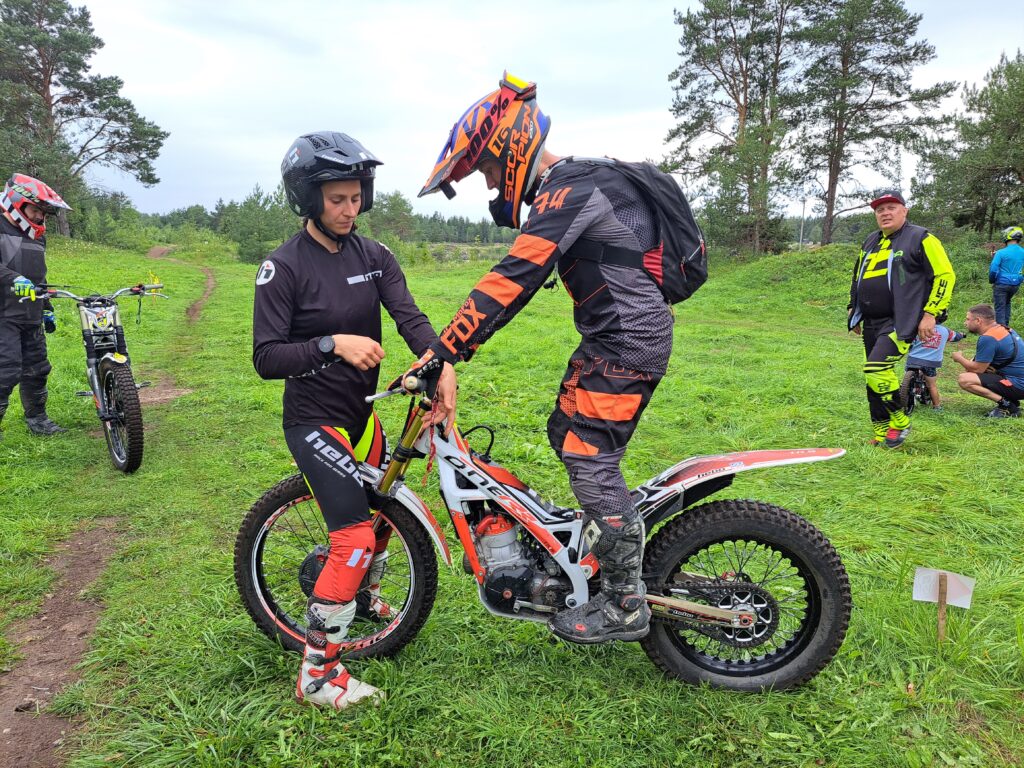
When first encountering a trial bike, Keity advises keeping in mind that it’s quite a quick machine. “When you first take the bike, just try to glide to understand what the bike wants to tell you and how to control it because if you come from another bike, you’ll immediately notice that the geometry is completely different,” emphasized the master.
The body posture on a trial bike should allow much movement, letting the terrain guide you. It’s crucial to steer with your feet on the footpegs and let the bike move freely underneath you on challenging terrain. The most important thing is to get familiar with the clutch and brakes at home, doing figure eights, slaloms, and cornering techniques where the bike leans in, but you lean out. “And you should achieve balance so that if you stop in a turn, you don’t fall over,” the master specified. “When these exercises become boring, find a slope, and you’ll discover that you’re no longer static in one position but need to move more and play with weight distribution – how much to distribute forward and backward, whether the front end starts to slip away or not.”
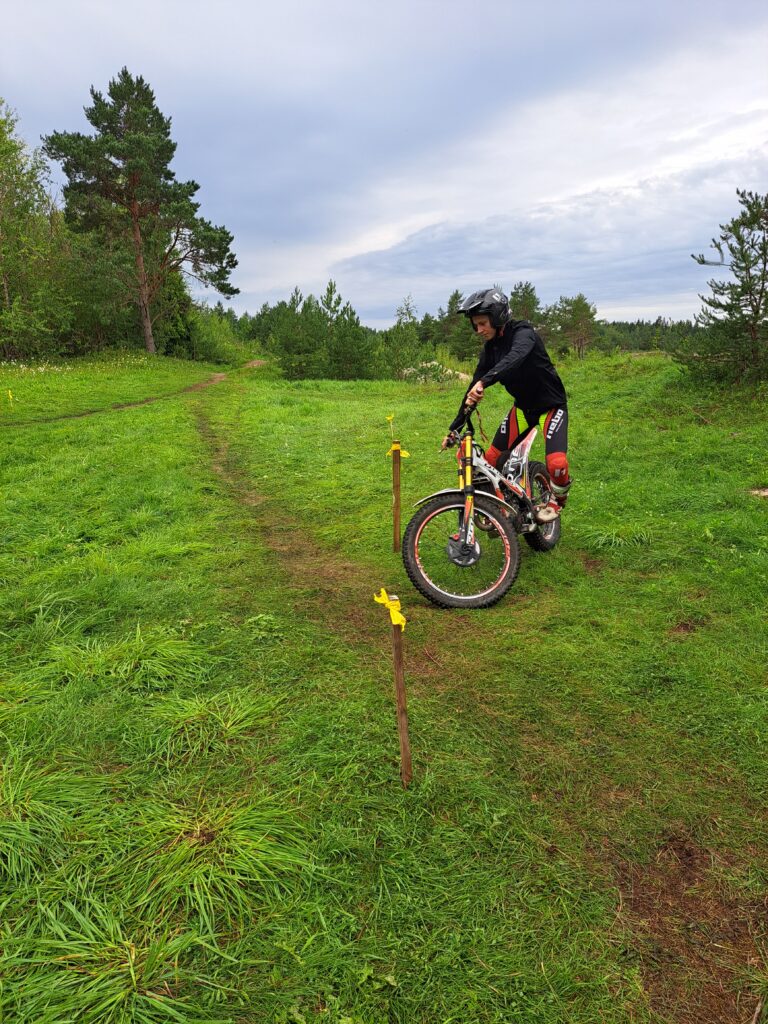
Trials could be called the foundation of all motorsports. “I like everything with two wheels! I’ve ridden enduro and felt quite at home, but it’s a relatively expensive sport. I remember participating in a competition in Männiku, where there were about 40 guys in my class. I had done two enduro training and won it,” Keity confirmed that trials are the basis of motorsports. It indeed gives a great advantage.
However, riding a Ducati Monster on the road took some getting used to for a trial rider because the handlebars didn’t work the same way as on a trial bike – in a turn, you should lean, not twist the handlebars! “I quickly realized that this wasn’t a trials handlebar. I attended a track training with Marko Rohtlaan, and my goal was to get my knee down, which I managed in the first training. I felt too comfortable, and the bike slipped out, but no matter what bike –give me a bike, and I’ll ride it, even on a motocross track!” Keity said. The trial, according to her, is like the alphabet. “Even Dakar Rally riders train with trials riders in Spain,” she pointed out.
Due to the Non-Stop rule, several trial riders quit competing, and today, they are top-level enduro riders. For example, when Pol Tarres quit, Keity was starting. Today, former trials champion Tarres is making waves in the enduro world with the Yamaha Tenere 700, which is not a traditional lighter enduro bike. Billy Bolt was once a factory trials rider, now making a name in the enduro world. Trials master Graham Jarvis is riding enduro at the world level at 49. Trials rider Sandra Gomez is successfully conquering enduro tracks. Multifunctional Laia Sanz, a 13-time women’s trials world champion, is making great strides in Dakar and Enduro. “She is a crazy woman; I think she has the most amazing mindset in the world, psychologically very strong – I’d love to read a book about her brain someday,” said Keity.
